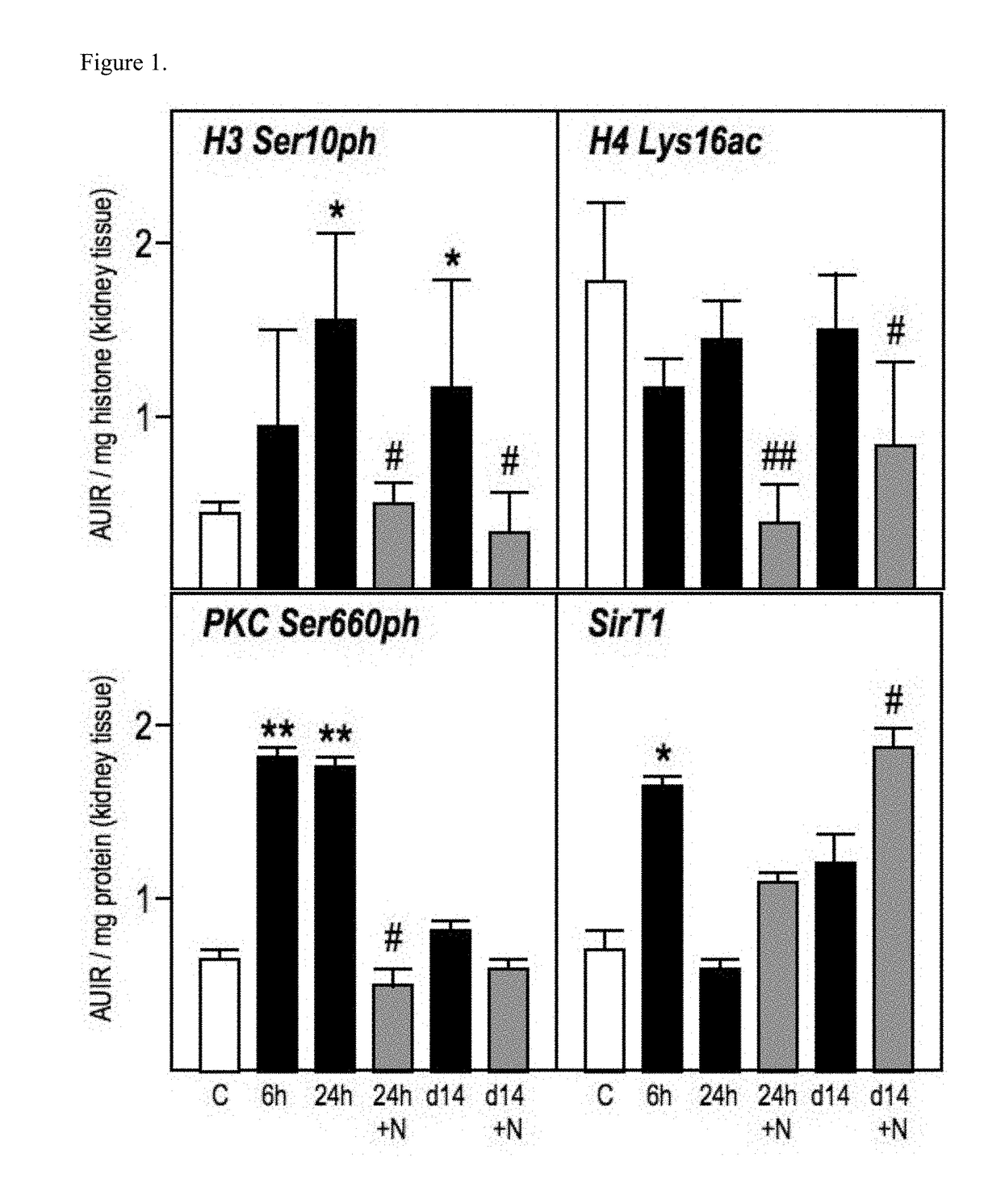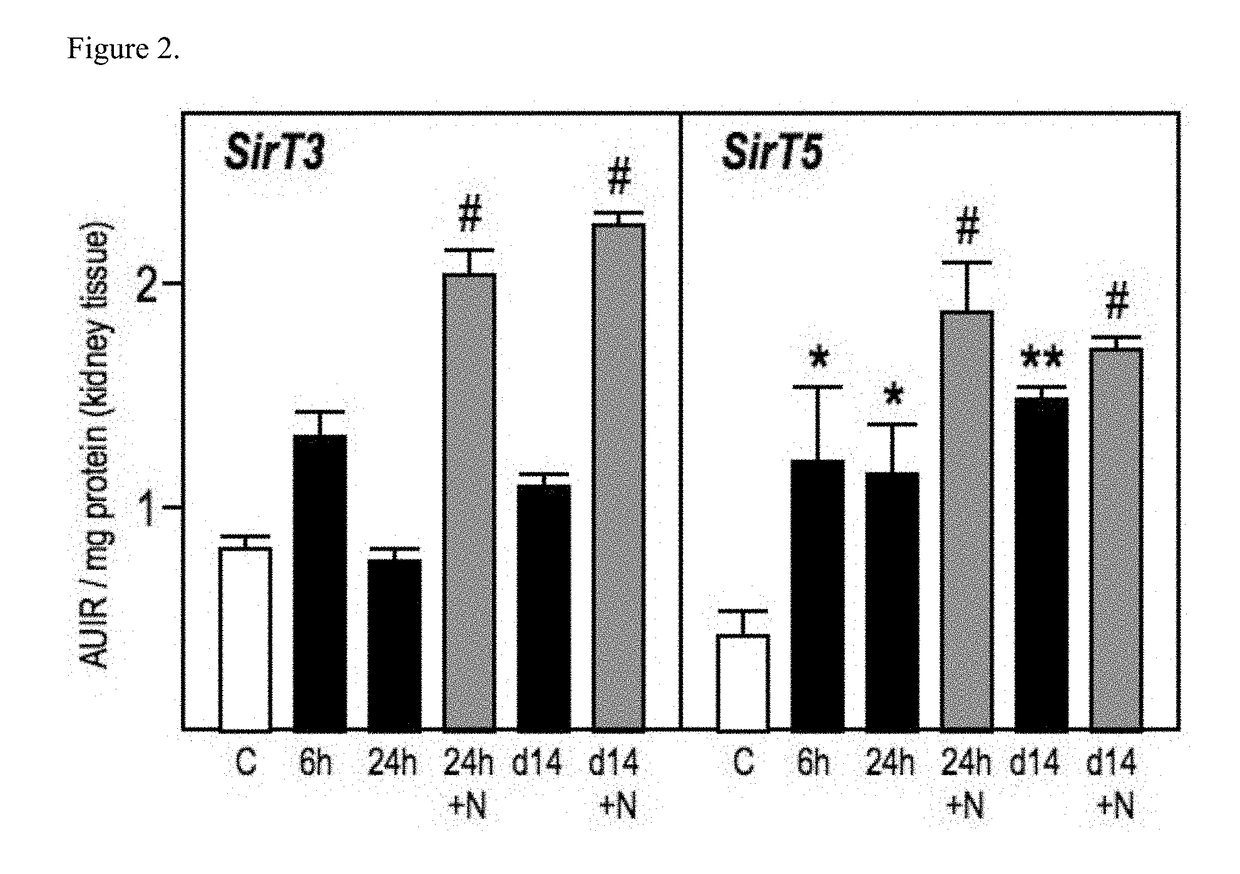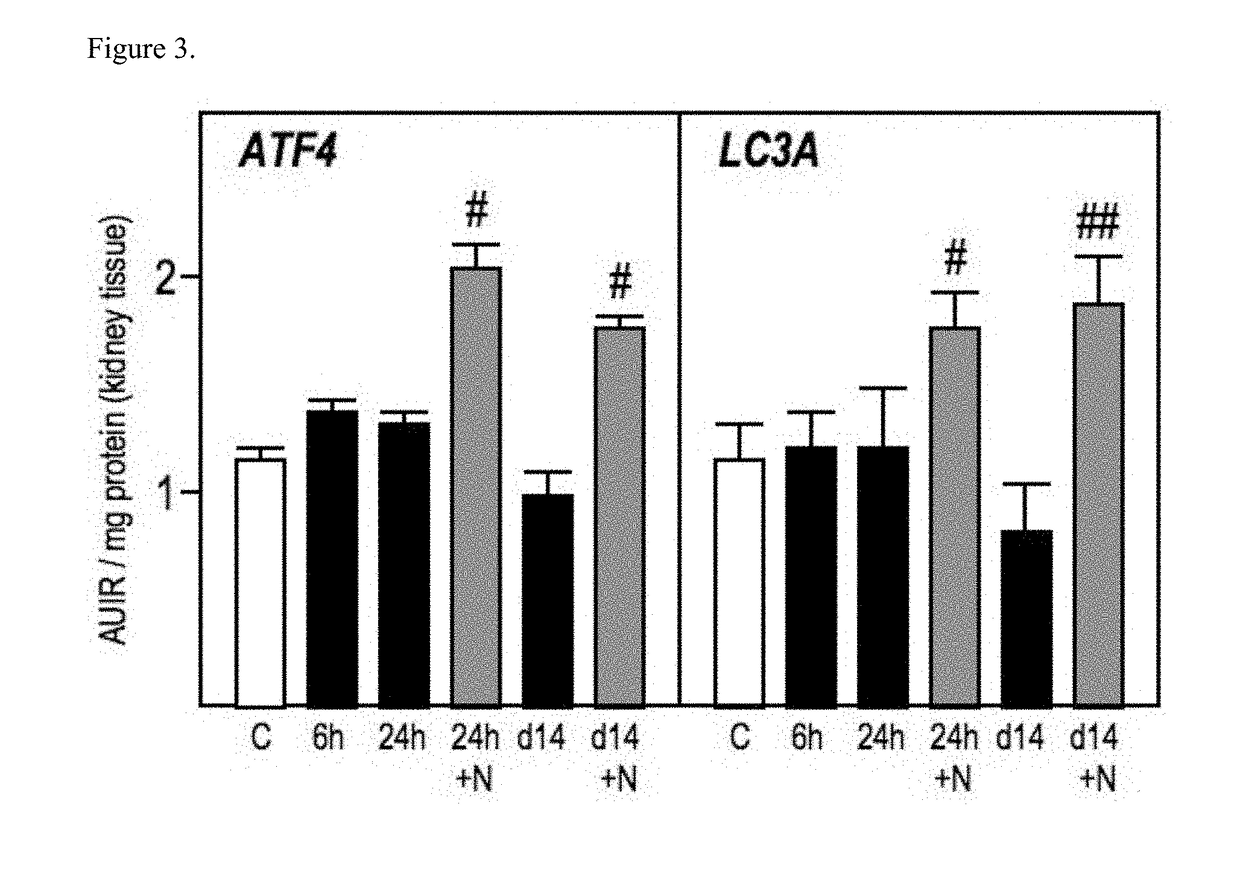Modulation of epigenetic stress response
a technology of epigenetic stress and response, applied in the field of medical diagnostics and therapeutics, can solve the problems of multiple organ failure, patient death, morbidity and death in subjects,
- Summary
- Abstract
- Description
- Claims
- Application Information
AI Technical Summary
Benefits of technology
Problems solved by technology
Method used
Image
Examples
example 1
Rat Burn Model
[0097]The objective of the rat burn experiments was to test the effect of treatment with nephrilin on the neuroimmunological sequelae of burn trauma. The protocol was as follows:
TABLE 1Drugs and TreatmentGr.NAgentmg / kgRteScheduledays15sham—scdaily125saline—scdaily135nephrilin4scdaily145sham—scdaily1455saline—scdaily1465nephrilin4scdaily14
Burn model protocol: The rat scald burn model (Herndon D N, 1978) induces inflammation and hypermetabolism similar to what is experienced by severely burned people. The rat scald burn model that induces inflammation and hypermetabolism in line with what patients experience is a modified Walker-Mason model. Dr. David Herndon refined this model and has >30 years of experience using this model. This injury, when performed correctly, has a mortality rate of <5%. All animals continue to receive Ensure and water ad libitum throughout the study. Prophylactic analgesia (0.05 mg / kg body weight Buprenorphin) is administered followed by general a...
example 2
Murine Sepsis Models: Cecal Ligation (CLP) and Burn Sepsis Model
[0099]The objective of the experiments was to determine sepsis mortality in untreated and nephrilin-treated animals.
TABLE 2Drugs and Treatment:1 Drug / Testing AgentGr.NAgentmg / kgRouteComments 1#6CLP + Saline—sctail bleed 24 hrs26CLP + Nephrilin4sc″34Sham——″#Control Group
Male C57BL / 6 mice used for this study were commercially obtained (Taconic Labs) and were between 8-12 weeks of age. Mice were acclimated to housing suite for one week prior to experiment and had access to food and water ad lib and were on a 12:12 L / D lighting cycle. Mice were anesthetized using 5% vaporized isoflurane. The abdomen was shaved and disinfected prior to surgery. A lateral incision was made through two layers and the cecum exposed and ligated at 0.75 cm from the most distal region of the cecum. Two perforations were made side by side, with a 21.5 gauge needle. After perforation, the ligated portion of the cecum was gently squeezed to expose a ...
example 3
Timing of Treatment in Herndon Rat Scald Model
[0101]Animals were burned as described in Example 1. Animals were injected either with saline or nephrilin beginning two hours after burn (4 mg / kg / day injected subcutaneously once daily for 7 days). Nephrilin treatment was either on days 1-7 or days 8-14. All animals were sacrificed at Day 14. Table 4 shows the results obtained in various analyses of tissues:
TABLE 4Analysis of rat tissuesBurn +Burn +Burn +NephrilinNephrilinShamSalineDays 1-7Days 8-14Parameter Measured(n = 5)(n = 8)(n = 8)(n = 5)Glucose (% basal @ t60′)99.4 ± 1.1 118.2 ± 11.1#106.8 ± 5.7* 115.8 ± 6.1 Serum Insulin (pg / ml)454 ± 201 1114 ± 6443# 495 ± 362*1548 ± 915Urinary 8-OHDG (ng / pg226 ± 149372 ± 291102 ± 45 251 ± 258CysC)Urinary 8-isoprostane8.4 ± 8.517.3 ± 11.96.6 ± 4.2 14.0 ± 15.5(ng / pg CysC)Kidney p66shc-S36 (phos)9.6 ± 2.816.2 ± 3.9#10.4 ± 2.8*13.0 ± 5.5AU / mg proteinKidney pRac1-S71 (phos)6.7 ± 3.712.3 ± 3.8# 8.1 ± 1.9*11.7 ± 5.9AU / mg proteinPKC-beta gene expressi...
PUM
| Property | Measurement | Unit |
|---|---|---|
| Frequency | aaaaa | aaaaa |
| Frequency | aaaaa | aaaaa |
| Fraction | aaaaa | aaaaa |
Abstract
Description
Claims
Application Information
 Login to View More
Login to View More - R&D
- Intellectual Property
- Life Sciences
- Materials
- Tech Scout
- Unparalleled Data Quality
- Higher Quality Content
- 60% Fewer Hallucinations
Browse by: Latest US Patents, China's latest patents, Technical Efficacy Thesaurus, Application Domain, Technology Topic, Popular Technical Reports.
© 2025 PatSnap. All rights reserved.Legal|Privacy policy|Modern Slavery Act Transparency Statement|Sitemap|About US| Contact US: help@patsnap.com



